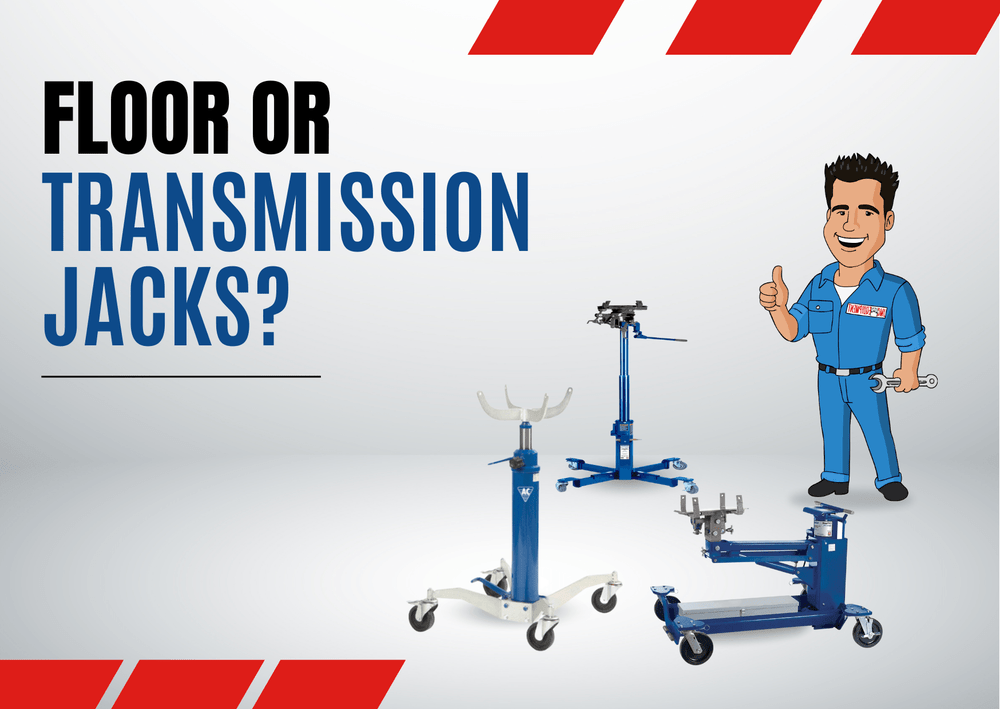Floor or transmission jacks? Why these tools are necessary
Posted by JMC Team on 26th Oct 2023
When it comes to lifting vehicles, there are many options; one of them is transmission jacks. Transmission jacks are devices that help lift and lower transmissions and transfer cases. But are they worth it? Are they necessary if I'm running an auto repair shop? For this reason, in this blog post, we'll explain why transmission jacks are necessary. We'll review how they differ from each other and which ones are best for your needs.
Why do you need a transmission jack?
A transmission jack is not just a convenience; it's a safety need. In fact, lifting a transmission by hand or with a regular floor jack can be dangerous and cause injuries or damage to the vehicle. Transmission jacks can weigh anywhere from 150 to 800 pounds, depending on the type and size of the vehicle.
Balancing a heavy load on a floor jack or a makeshift support can result in the transmission slipping or falling. It can also crush your fingers, hands, arms, legs, or even your head. This is why working with transmission jacks is essential for your auto shop's safety.
Indeed, transmission jacks are designed to securely hold and support the transmission while you remove or install it. They have a wide base for stability and a saddle with adjustable brackets or chains to fit different sizes and shapes of transmissions.
Moreover, there are transmission jacks that come with hydraulic or pneumatic mechanisms. They raise and lower the load with ease and precision.
A transmission jack also allows you to align the transmission with the engine or drivetrain. In fact, it would make the installation process smoother and faster.
What are the types of transmission jacks?
There are two types of transmission jacks: transmission stands and heavy-duty transmission jacks. Transmission stands are smaller and lighter than heavy-duty transmission jacks. They are usually used for low-profile vehicles, such as cars and light trucks.
Besides, they have a low, small height, which allows them to fit under vehicles with low ground clearance. These transmission jacks have a limited lifting capacity, usually between 500 and 1,500 pounds.
Heavy-duty transmission jacks are larger and heavier than transmission stands. They are used for high-profile vehicles, such as buses, trucks, and tractors. In fact, they have a small height, which means they need more space under the vehicle to operate. Also, these transmission jacks have a higher lifting capacity. It is usually between 2,000 and 4,000 pounds.
Another way to classify transmission jacks is by their lifting range. Some of them have a low-rise design, which means they can only lift the load up to a certain height, usually between 20 and 30 inches. Thus, these are suitable for vehicles that have enough room above the transmission for removal or installation.
Other transmission jacks have a high-rise design. This means they can lift the load higher than low-rise jacks, usually between 30 and 70 inches. These are ideal for vehicles that have limited space above the transmission.
Which are the best transmission jacks?
The best transmission jacks for your auto shop depend on several factors. Actually, consider the type and size of the vehicle you work on, the space available in your shop, your budget, and your personal preference.
But, based on our sales experience, we recommend the following four models as some of the best transmission jacks on the market:
Hydraulic Transmission Jack, AME VLT12, 1.2 Ton
This is a low-rise transmission stand that can lift up to 2,400 pounds. It has a small height of 8 inches and a large height of 31 inches. Also, it comes with a large saddle with four adjustable arms that can accommodate various transmissions. This transmission stand has four swivel casters for easy mobility and two locking casters for stability.
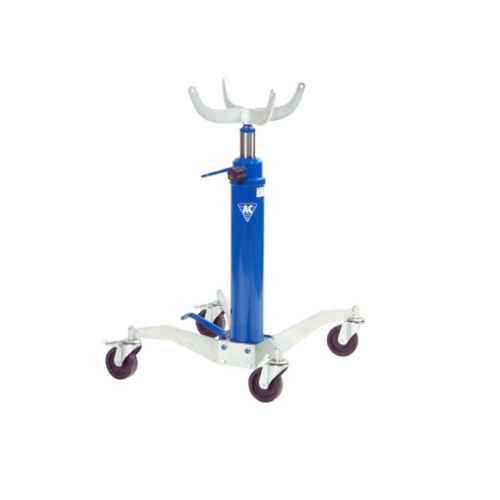
Heavy-duty transmission jack, Mahle CTJ-2700H, 2,700 lb.
This is a high-rise, heavy-duty transmission jack that can lift up to 5,400 pounds. It has a small height of 37 inches and a large height of 77 inches. Also, it comes with an air-operated hydraulic system that provides smooth and fast lifting and lowering. You can use the adjustable head that can tilt forward, backward, left, and right for precise alignment.

Heavy-duty transmission jack, Mahle ATJ-1000H ATJ-1000H: 1,000 lb.
This is another high-rise, heavy-duty transmission jack that can lift up to 2,000 pounds. It has a small height of 35 inches and a large height of 71 inches. Also, it comes with a foot-operated pump that allows hands-free operation and a release valve that controls the lowering speed. The four ratchet straps secure the load to the saddle.
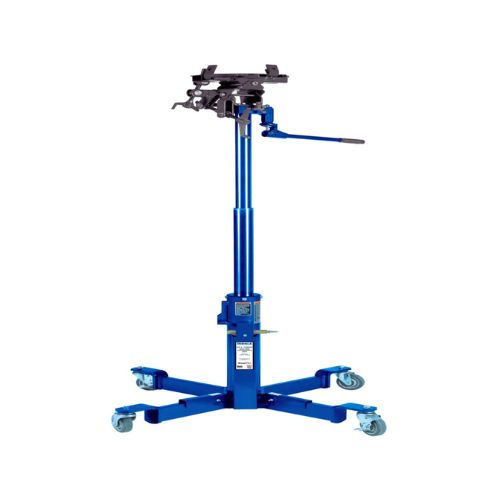
Esco 10812 Yellow Jackit Transmission Jack, 2.2 Ton
This is yet another high-rise, heavy-duty transmission jack that can lift up to 4,400 pounds. It has a small height of 10 inches and a large height of 35 inches. Also, it has an air-assisted hydraulic system that offers smooth and easy lifting and lowering. The foot pedal controls the lifting speed, and a hand lever controls the lowering speed.
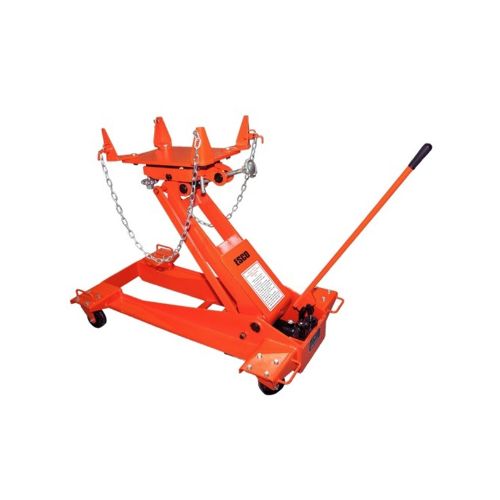
Norco Telescopic Transmission Jack
This is a low-rise, heavy-duty transmission jack that can lift up to 1,500 pounds. It has a small height of 35 inches and a large height of 76 inches. The telescopic design allows it to extend and retract for different lifting heights. It also has a fastjack feature that allows it to quickly reach the load without pumping.
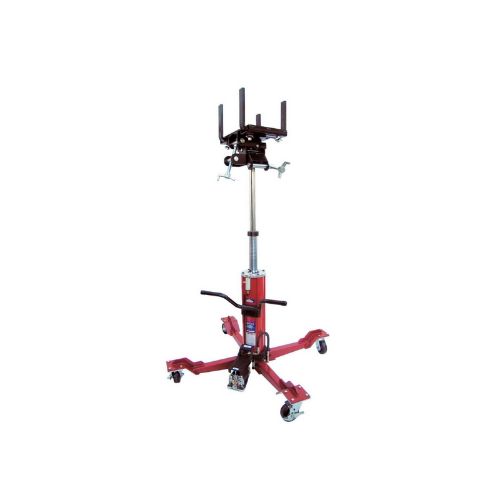
These are some of the best transmission jacks you can find, but there are many more options out there. The important thing is to choose the one that suits your needs and preferences. A transmission jack is an investment that can save you time, money, and hassle in the long run, so make sure you get the best one for your job.
If you need help choosing the best equipment for your shop, don't hesitate to contact us. Our expert team will guide you through everything you need.

